Recently, in a story about the history of poker protests, we talked about how partypoker introduced "amateur tables" in 2013 – winning players did not see them in the lobby at all. Then the project was quickly curtailed, but the idea that amateurs need to be protected from regulars did not go away. Over the next 10 years, the poker rooms, with varying degrees of enthusiasm, limited the opportunities for the pros to select.
We have studied the situation and are ready to tell you where today it is still easy to get hooked on a familiar fish with a green mark, and where you can get a warning from security for even thinking about it. And we also remember how many tables you can play, whether the software is allowed (and what kind) – and in conclusion, we ask the regulars about the methods of game selection in poker in 2023.
GGPoker
Let's start with the market leader. Select is not officially banned, but the network is still notorious for controversial player bans for bum hunting. At the same time, it can be difficult to clearly determine whether you are a bum hunter by chance.
Number of tables: up to nine of one limit, maximum – 20. Fast poker: up to four tables of each limit.
Auxiliary software: prohibited. There are built-in statistics with limited functionality – which, however, often allows you to successfully recognize amateurs at the tables. The minimum buy-in is 20BB in Hold'em and 10BB in Omaha, and in fast poker – 40BB and 20BB respectively.
Select restrictions: specific. In practice, select is available (player nicknames are visible in the lobby and at the tables), but bum hunting is officially prohibited on the network. Moreover, these restrictions (quite officially) are two: “direct” and “indirect”. The first is chasing a specific fish and stopping the game after it leaves. The second is the refusal to play with certain players. The punishment in both cases is a ban, but the room always starts with warnings.
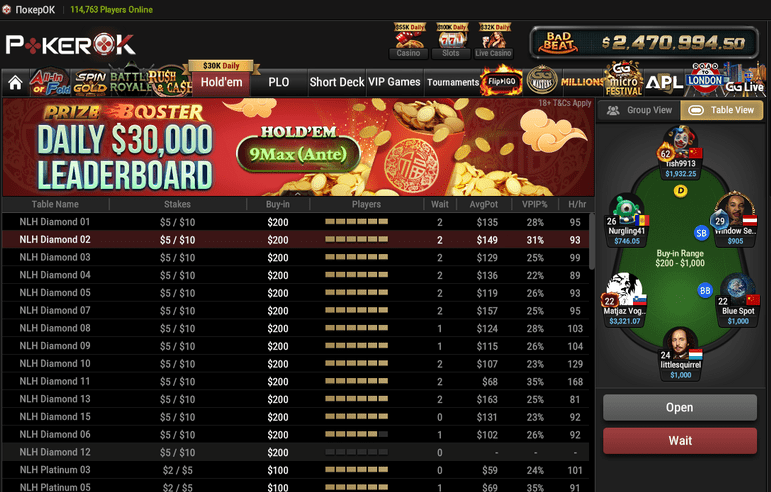
Red Star Poker
The flagship room of the iPoker network tries to please both regulars and amateurs. The former can use auxiliary software (Hand2Note works with some restrictions – in particular, without a dynamic HUD), and the latter received an anonymous lobby.
Number of tables: 16. There is a limit on heads-up tables: a maximum of four tables without an opponent. The minimum buy-in is 40 BB.
Auxiliary software: allowed. Since April 1 this year, the network has banned the use of auto-landing scripts. A list of restrictions for Hand2Note can be found in our August poker room news digest.
Select restrictions: the lobby is anonymous. To see the nicknames of opponents, you need to put the BB.
Additional software: iPokerTools. Auxiliary program for the rooms of the iPoker network. You can assign hotkeys, conveniently arrange tables for multi-tabling, change font sizes, and colors, highlight active tables, and so on. GT+ players get iPoker Tools for free.
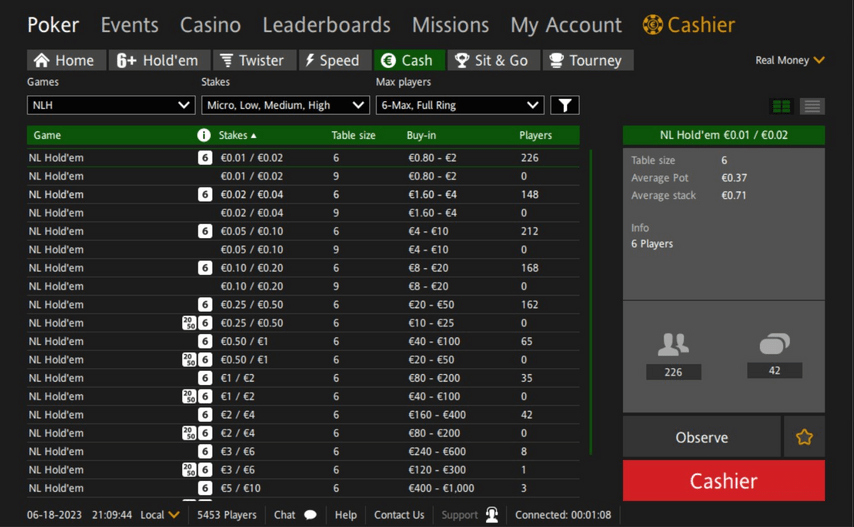
TigerGaming and other rooms of the Chico network
The network limits the regulars in the choice of tables (in some cases very severely), but it is loyal to auxiliary software.
Number of tables: up to eight regular, up to four fast. The minimum buy-in is 100 BB (which is beneficial for regulars). The minimum limit is NL10.
Auxiliary software: allowed. H2N's dynamic HUD works at regular tables. Nothing works for fast players: if one of the opponents has hands, then the HUD will appear, but new hands will not be collected.
Select restrictions: the lobby is anonymous. To see the nicknames of opponents, you need to post the BB. In March, some players were stopped from selecting further, notifying them of "account restrictions". After that, the selection of tables becomes unavailable in the cash lobby at all stakes. It is possible to play at the same time, but only through the Seat Me function with automatic landing.
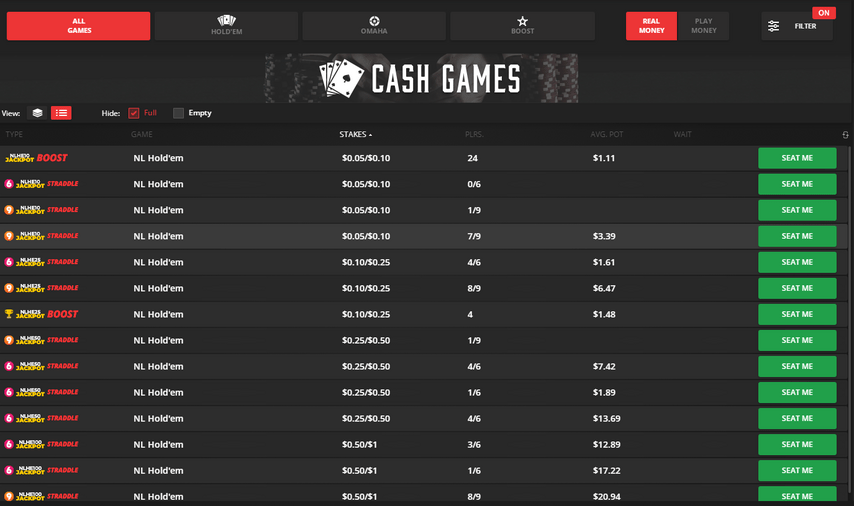
PokerKing and other WPN rooms
Winning rooms do not allow table selection but allow trackers and HUDs.
Number of tables: up to 24 regular, up to five fast. The minimum buy-in is 40 BB, the maximum is 120 BB.
Auxiliary software: allowed.
Select restrictions: the lobby is anonymous. To see the nicknames of opponents, you need to put the BB.
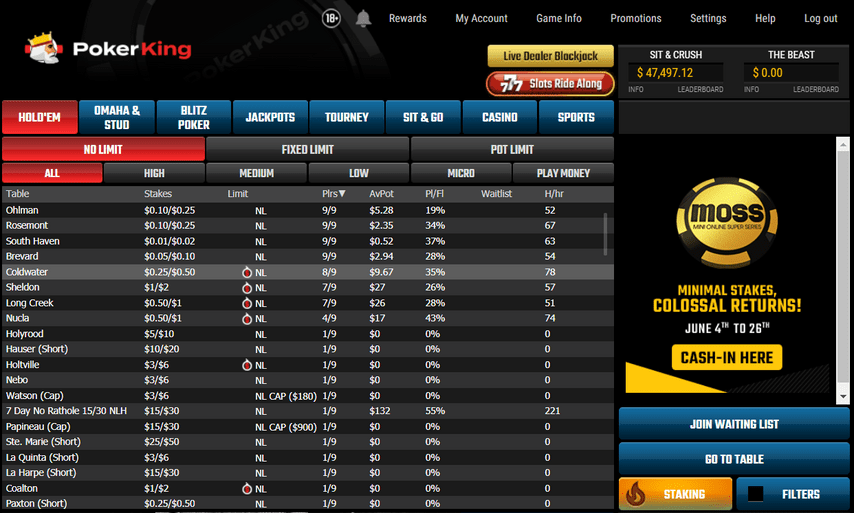
WPTGlobal
The main feature of the room is its dislike for multi-tablers. The number of tables is strictly limited, even in MTTs. Ancillary software is not supported.
Number of tables: up to three regular or one fast. MTT – up to seven tables and seven is the maximum that can be opened in total in any discipline.
Auxiliary software: prohibited. Tracking is not available, there is no mining.
Select restrictions. Formally absent, player nicknames are visible. But, according to GT+, winning regulars don't see some of the tables: if there are more than two regs at the table, the rest of the regs in the lobby can't see it.
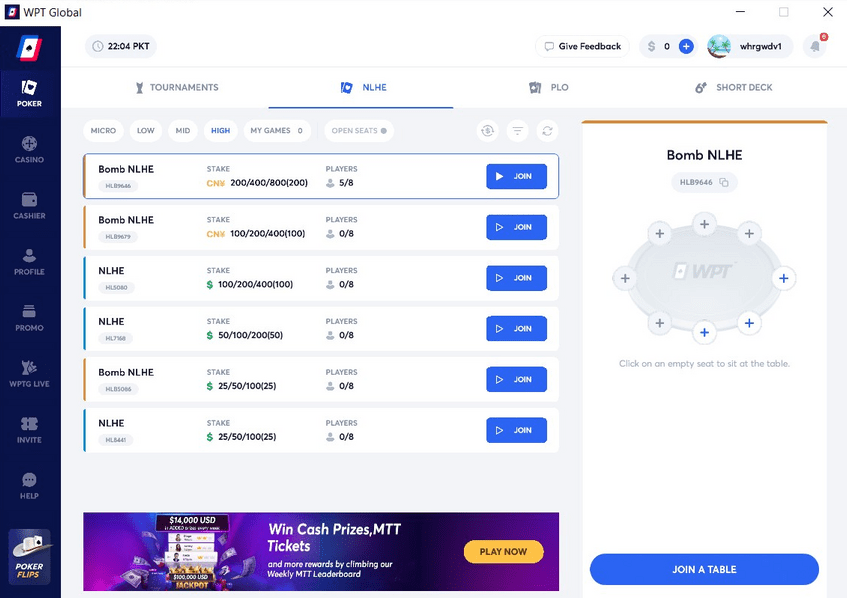
Pokerstars
The same loyalty program is back from 2021, there are no restrictions on selection.
Number of tables: Four regular and four fast poker.
Auxiliary software: allowed.
Select restrictions: none. Nicknames of players are visible both at the tables and just in the lobby.
Additional software: StarsCaption . Allows, among other things, to copy the nicknames of opponents and quickly run through their stats. Available to GT+ players for free.
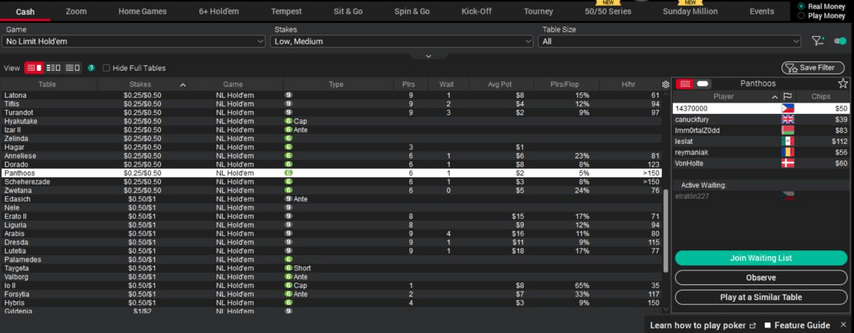
Coinpoker
In the growing popularity of the cryptocurrency room, complete freedom reigns. Nobody limits the selection.
Number of tables: 12, minimum buy-in – 40 BB.
Auxiliary software: officially prohibited, but HM3 works through a converter, and H2N works with Asia and Pro subscriptions.
Select restrictions: none. Nicknames of players are visible at the tables in advance. A nice bonus: you can see who is playing from a smartphone (as in the golden years at PokerStars).
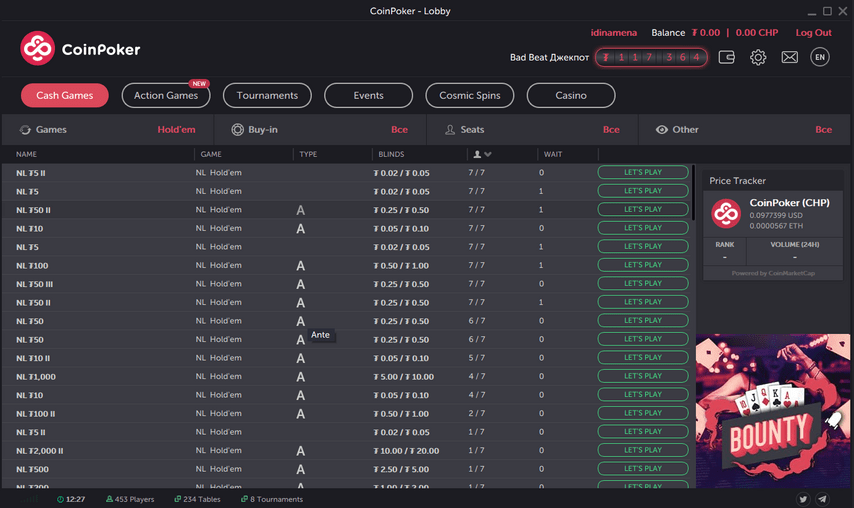
888Poker
Everything is still like in the good old days.
Number of tables: Six regular and four fast poker. The minimum buy-in is 40BB in Hold'em (including fast tables) and 20BB in Omaha.
Auxiliary software: allowed.
Select restrictions: none. Nicknames of players are visible in the lobby.
Additional software: 888Caption. Available for free when playing from GT+.
You can play six regular cash tables and four fast poker tables.
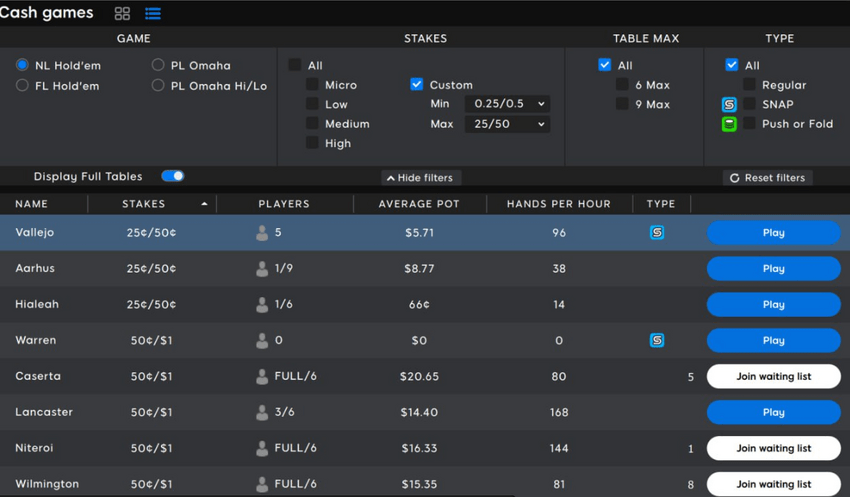
We asked several regulars to talk about their approach to game selection.
"Dfghnajkafs" , NL200/400 reg
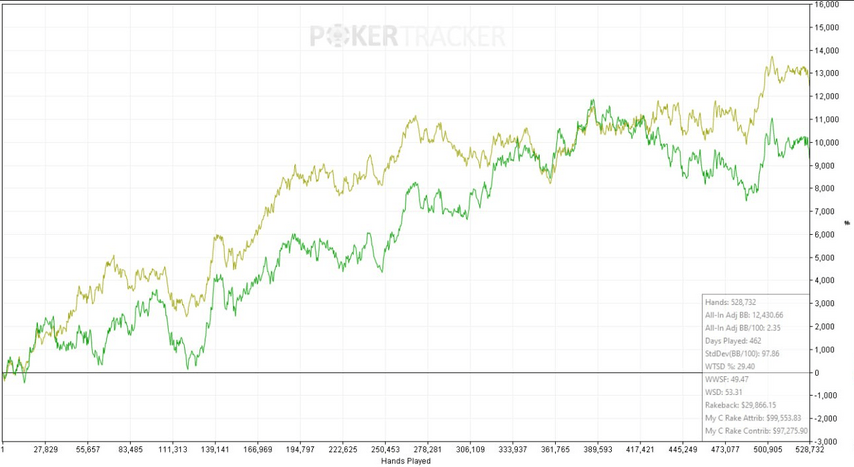
I play in the "dead" time, during the early day GMT. Up to stakes of 200 it is still possible to somehow choose “preferred” rooms and focus on them, then after 400 it is almost always an unconditional and desperate multi-room in an attempt to find at least something, at least somewhere.
It is most pleasant to select, of course, when you can already see from the lobby who is sitting at the table, and there are also waitlists. At the moment, there are very few such rooms left, with anonymous tables, an increase in the percentage of “idle” regwars is inevitable, that is, in any case, you will have to wet your nose and play an orbit, and most likely many of them, because it is not always clear whether you have already checked this table or not. Yes, and during the time that they did not check, everything could already change, an amateur could fly in there.
There are two main paths in the selection:
1. Start tables and play regwars, upon the arrival of an amateur, make a decision – to stay at the table, or to leave and start a new one.
2. Keep the tables open, nd when others start, try to jump on any unoccupied seat (and only then figure out where you jumped there – otherwise you simply won’t have time).
There are many objective and well-known criteria for a quality selection – our position at the table relative to the amateur, his loss rate, the number of hands played, and so on. In reality, on 400+ very often the selection comes down to having an amateur at the table at all, at least some. Otherwise, there will simply be nothing to play for, the profits will be gained slowly, but the win rate, of course, will be higher. Here everyone decides for himself.
Selection is a very painstaking job that interferes with “just playing” poker, takes a lot of concentration, worsens the quality of decisions made, and reduces the number of hours you can spend playing. Being able to get to a good table with an amateur is often more important than overall technical skill. In poker, the strongest player does not always win the most, street respect does not translate into money here.
Anton "Nko1" Platnov, GT Pro Gold coach
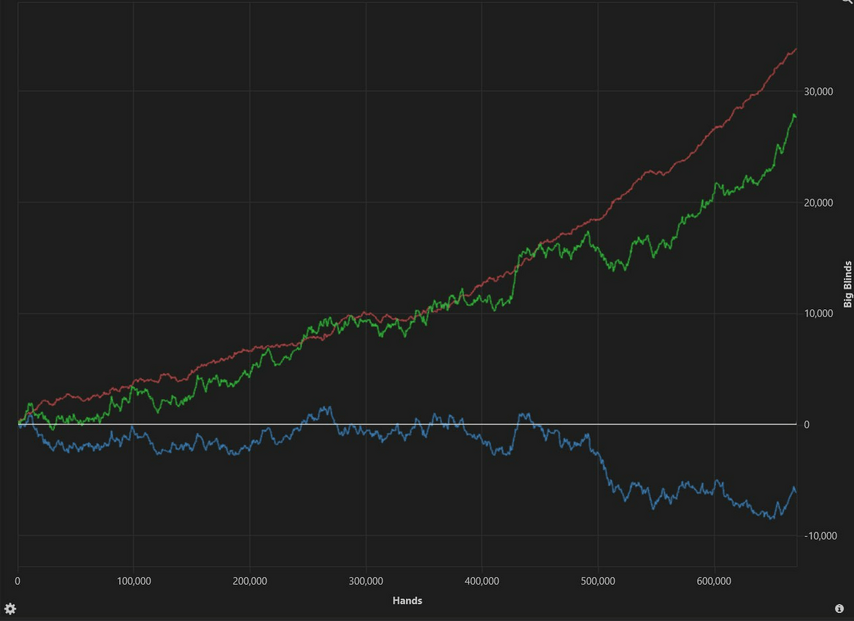
When I was running Chico and WPN reg tables with anonymous lobbies, I just waitlisted at all possible tables. If all the players had the “reg” mark, then I would play one orbit and get up from the table, having previously joined the queue again.
If there was an unknown, then I opened the stats and punched through the losers. Ideally, I'll get an amateur who pours 60+BB for 100 (in the rake chico +/-10BB for 100). If an amateur did not meet the criteria, then I simply played one round and closed the table (also getting into the waitlist for him again).
If there is no information on an amateur, then I look at how he plays 1-2 orbits, what he does, how often he limps, calls and how loose he plays postflop, and what sizes he uses. Usually, a couple of orbits are enough to evaluate the player's "potential" loss rate and decide whether to play this table or not. You can also watch incomplete tables – and as soon as the "sieve" appears – sit down at the table.
It is important to mark the clearing with color marks, especially if you monitor the lobbies of several rooms – this helps a lot to quickly orient yourself and not to play extra hands with regs without an amateur. Especially if the room has an open lobby (not anonymous), then you can open the lobby 2-3 times a day and check everyone's stats, put color marks, and write notes (loose rate, WWSF, and so on). The main thing is observation. It is extremely important to understand how an amateur plays in order to earn as much as possible.
When it comes to zoom selection, it's critical to play prime time. The rest of the time there is always a grind, there are almost no amateurs. In some rooms you can see who is currently in the pool, nicknames of the players, color marks will also help us to assess the “prospects” of the pool at the moment. If there are no labels yet, then the indicator is the number of player entries. One or two is usually amateur, anything three or more is almost always a reg.
Andrey Rustin, GT Pro Silver coach
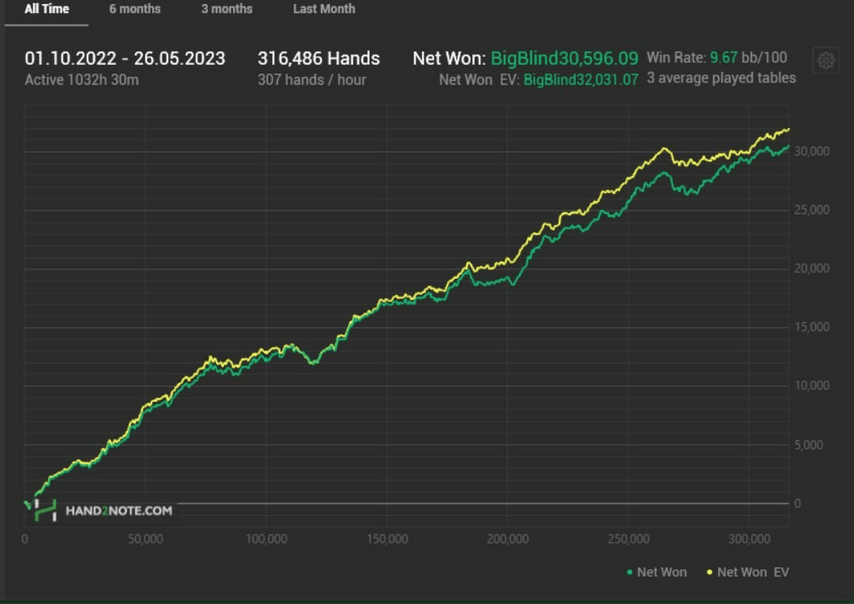
The main PS and 888 rooms, NL50 and NL100 stakes, – everything where there is a game. I mark the whole field for regs and fish, in order to immediately understand the lineup of the table when landing. If a weak player was not noticed, then I win back the orbit and leave.
Now on PS at these limits, if there is no desire to regwar, the selection is an endless scrolling of incomplete tables in the lobby up and down in search of an unknown nickname – and an attempt to press the play now button 0.01 second faster than the other 10 regs. In the evening during prime time, the tables fill up instantly, you can not have time to sit down at any table with a weak player.
At 888, the situation is a little simpler, you can sit in the waitlists for all the tables of the limit and wait for it to land while you click on the stars lobby. Incomplete tables also have to be monitored. At 888, the situation is complicated by the presence of scripters, but there are not so many of them, there are chances to sit down at the table with a weak player with hands.
Also now I'm trying Chico instead of 888. There the lobby is anonymous, and the lineup of the table can only be seen by paying the BB. The search for a game turns into an endless opening and closing of the same tables in the hope that this time there will be an unknown person. But on Chico everything is on an equal footing, there are no scripts, and there are quite a lot of fish before 9 PM GMT, so now I want to try to shift the focus to this room and see what happens.
Our support service can also help with the selection: just write to us, tell us what limits you play – and we will help you choose the best room or mobile application. And we monitor the traffic in the rooms at different times of the day at different limits on a weekly basis.










